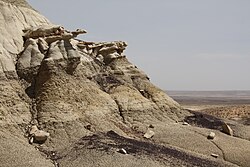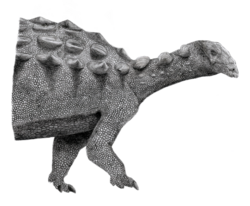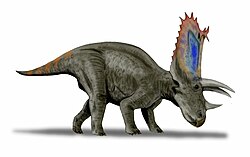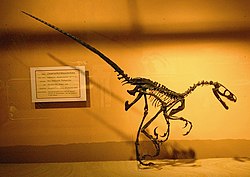| Kirtland Formation | |
|---|---|
| Stratigraphic range: Campanian (typically Kirtlandian) | |
 Kirtland Formation at its type location south of Kirtland, New Mexico | |
| Type | Geological formation |
| Sub-units | Hunter Wash, Farmington and De-na-zin Members |
| Underlies | Ojo Alamo Formation |
| Overlies | Fruitland Formation |
| Thickness | 594 m (1,949 ft) |
| Lithology | |
| Primary | Sandstone |
| Other | Shale, mudstone, conglomerate |
| Location | |
| Coordinates | 36°42′29″N108°21′00″W / 36.708°N 108.350°W |
| Approximate paleocoordinates | 42°36′N76°18′W / 42.6°N 76.3°W |
| Region | New Mexico |
| Country | United States |
| Extent | San Juan Basin |
| Type section | |
| Named for | Kirtland Post Office |
| Named by | C.M. Bauer |
| Year defined | 1916 |

The Kirtland Formation (originally the Kirtland Shale) is a sedimentary geological formation. [1]




















